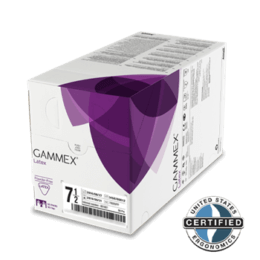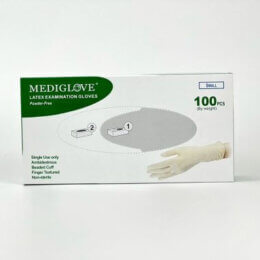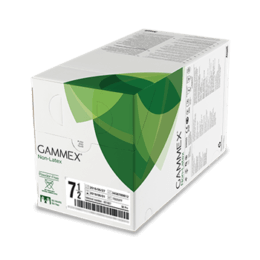Description
The use of finger cots in the workplace can provide a number of benefits. First, they can help to reduce the risk of contamination. By providing a barrier between the worker’s skin and the item being handled, finger cots can help to prevent the spread of bacteria and other contaminants. This can help to reduce the risk of illness and infection, as well as the risk of cross-contamination between different items.
Second, finger cots can help to reduce the risk of injury. By providing a barrier between the worker’s skin and the item being handled, finger cots can help to reduce the risk of cuts, scrapes, and other injuries. This can help to reduce the risk of lost time due to injury, as well as the cost of medical treatment.
Third, finger cots can help to improve worker productivity. By providing a barrier between the worker’s skin and the item being handled, finger cots can help to reduce the amount of time spent handling items. This can help to improve worker productivity, as workers can spend less time handling items and more time completing other tasks.
Finally, finger cots can help to improve worker safety. By providing a barrier between the worker’s skin and the item being handled, finger cots can help to reduce the risk of skin irritation and other skin-related issues. This can help to reduce the risk of skin-related illnesses and injuries, as well as the cost of medical treatment.
Overall, the use of finger cots in the workplace can provide a number of benefits. By providing a barrier between the worker’s skin and the item being handled, finger cots can help to reduce the risk of contamination, injury, and skin-related issues. This can help to improve worker productivity and safety, as well as reduce the cost of medical treatment.
How to Choose the Right Finger Cot for Your Needs
When selecting the right finger cot for your needs, there are several factors to consider. First, you should consider the size of the finger cot. Finger cots come in a variety of sizes, so it is important to choose one that fits your finger comfortably. If the finger cot is too small, it may be difficult to use and may cause discomfort. If the finger cot is too large, it may slip off your finger and be ineffective.
Second, you should consider the material of the finger cot. Finger cots are typically made of latex, nitrile, or vinyl. Latex finger cots are the most common and are generally the most affordable. They are also the most comfortable and provide the best grip. Nitrile finger cots are more durable and provide better protection against punctures and abrasions. Vinyl finger cots are the least expensive and provide the least protection.
Third, you should consider the thickness of the finger cot. Thicker finger cots provide more protection and are more durable, but they can also be more difficult to use. Thinner finger cots are easier to use, but they may not provide as much protection.
Finally, you should consider the purpose of the finger cot. Finger cots are used for a variety of purposes, such as medical procedures, electronics assembly, and food preparation. Depending on the purpose, you may need a finger cot with specific features, such as a textured surface for better grip or a powder-free surface for food preparation.
By considering these factors, you can choose the right finger cot for your needs. With the right finger cot, you can ensure that your work is done safely and efficiently.
The History of Finger Cots and Their Uses
Finger cots, also known as finger stalls, are small, tubular pieces of fabric or rubber that are designed to fit over the finger. They are used for a variety of purposes, ranging from medical to industrial.
The history of finger cots dates back to the early 19th century. At that time, they were primarily used in the medical field to protect the fingers of doctors and nurses from coming into contact with bodily fluids and other contaminants. They were also used to protect the fingers of patients from coming into contact with medical instruments.
In the early 20th century, finger cots began to be used in industrial settings. They were used to protect the fingers of workers from coming into contact with hazardous materials, such as chemicals and sharp objects. They were also used to protect the fingers of workers from coming into contact with hot surfaces.
Today, finger cots are still used in the medical and industrial fields. In the medical field, they are used to protect the fingers of medical personnel from coming into contact with bodily fluids and other contaminants. In the industrial field, they are used to protect the fingers of workers from coming into contact with hazardous materials, such as chemicals and sharp objects. They are also used to protect the fingers of workers from coming into contact with hot surfaces.
In addition to their use in the medical and industrial fields, finger cots are also used in a variety of other applications. For example, they are often used in the food industry to protect the fingers of workers from coming into contact with food. They are also used in the electronics industry to protect the fingers of workers from coming into contact with electrical components.
Finger cots are an essential tool for many industries and professions. They provide protection for the fingers of workers from coming into contact with hazardous materials, hot surfaces, and other contaminants. They are also used to protect the fingers of medical personnel from coming into contact with bodily fluids and other contaminants. As such, finger cots have been an important part of the medical and industrial fields for over two centuries.
The Different Types of Finger Cots and Their Uses
Finger cots are a type of protective covering used to cover the fingers and thumbs. They are typically made of latex, rubber, or silicone and are used in a variety of industries and applications. Finger cots are used to protect the user from contact with hazardous materials, to provide a barrier between the user and the material being handled, and to provide a secure grip on small objects.
Latex finger cots are the most common type of finger cots. They are inexpensive and provide a good level of protection against contact with hazardous materials. They are often used in medical and laboratory settings to protect the user from contact with bodily fluids, chemicals, and other hazardous materials. Latex finger cots are also used in the food industry to protect the user from contact with food products.
Rubber finger cots are more durable than latex finger cots and provide a higher level of protection. They are often used in industrial settings to protect the user from contact with sharp objects, hot surfaces, and hazardous materials. Rubber finger cots are also used in the automotive industry to protect the user from contact with hot engine parts.
Silicone finger cots are the most expensive type of finger cots but provide the highest level of protection. They are often used in medical and laboratory settings to protect the user from contact with hazardous materials. Silicone finger cots are also used in the food industry to provide a secure grip on small objects.
In addition to the different types of finger cots, there are also different sizes and shapes available. Finger cots come in a variety of sizes to fit different finger sizes and shapes. They are also available in different colors to make them easier to identify.
Finger cots are an essential tool for many industries and applications. They provide a barrier between the user and hazardous materials, protect the user from contact with sharp objects, and provide a secure grip on small objects. Different types of finger cots are available to meet the needs of different industries and applications.
The Pros and Cons of Using Finger Cots in Medical Settings
Finger cots are a type of medical glove that are designed to cover only the fingertips. They are often used in medical settings to protect against the spread of infection and to provide a barrier between the patient and the medical professional. While finger cots can be beneficial in certain situations, there are also some drawbacks to their use.
Pros
One of the main advantages of using finger cots in medical settings is that they provide a barrier between the patient and the medical professional. This helps to reduce the risk of cross-contamination and the spread of infection. Finger cots are also more comfortable to wear than traditional medical gloves, as they are designed to fit snugly over the fingertips. This makes them ideal for tasks that require a high level of dexterity, such as taking blood samples or performing delicate procedures.
Finger cots are also more cost-effective than traditional medical gloves, as they can be used multiple times before needing to be replaced. This makes them a more economical choice for medical professionals who need to perform a variety of tasks.
Cons
One of the main drawbacks of using finger cots in medical settings is that they provide less protection than traditional medical gloves. This is because they only cover the fingertips, leaving the rest of the hand exposed. This means that medical professionals may be at risk of coming into contact with bodily fluids or other contaminants.
Finger cots can also be difficult to put on and take off, as they are designed to fit snugly over the fingertips. This can be time-consuming and can lead to delays in medical procedures.
In conclusion, finger cots can be beneficial in certain medical settings, as they provide a barrier between the patient and the medical professional and are more comfortable to wear than traditional medical gloves. However, they also have some drawbacks, such as providing less protection than traditional medical gloves and being difficult to put on and take off.




